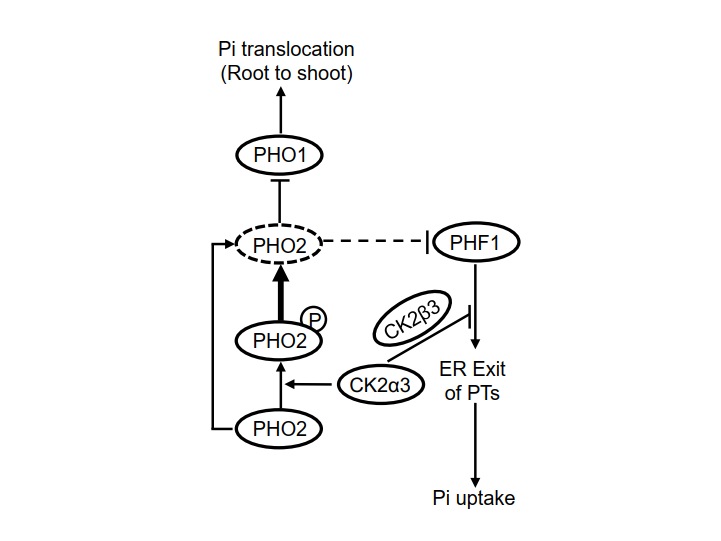Title: CASEIN KINASE2-Dependent Phosphorylation of PHOSPHATE2 Fine-tunes Phosphate Homeostasis in Rice
Fei Wang, Meiju Deng, Jieyu Chen, Qiuju He, Xinye Jia, Huaxing Guo, Jiming Xu, Yidong Liu, Shuqun Zhang, Huixia Shou, Chuanzao Mao
Published March 2020. DOI: https://doi.org/10.1104/pp.20.00078
Abstract
Plants have evolved complex physiological and biochemical mechanisms to adapt to a heterogeneous soil phosphorus (P) environment. PHOSPHATE2 (PHO2) is a phosphate (Pi) starvation-signaling regulator involved in maintaining Pi homeostasis in plants. Arabidopsis (Arabidopsis thaliana) PHO2 targets PHOSPHATE TRANSPORTER1 (PHT1) and PHOSPHATE1 (PHO1) for degradation, whereas rice (Oryza sativa) PHO2 is thought to mediate PHOSPHATE TRANSPORTER TRAFFIC FACILITATOR1 (PHF1) degradation. However, it is unclear whether and how PHO2 is posttranslationally regulated. Here, we show that in rice, the CASEIN KINASE2 (OsCK2) catalytic subunit OsCK2α3 interacts with OsPHO2 in vitro and in vivo in vascular tissues cells, and phosphorylates OsPHO2 at Ser-841. Phosphorylated OsPHO2 is degraded more rapidly than native OsPHO2 in cell-free degradation assays. OsPHO2 interacts with OsPHO1 and targets it for degradation through a multivesicular body-mediated pathway. PHO1 mutation partially rescued the pho2 mutant phenotype. Further genetic analysis showed that a nonphosphorylatable version of OsPHO2 rescued the Ospho2 phenotype of high Pi accumulation in leaves better than native OsPHO2. In addition to the previously established role of OsCK2 in negatively regulating endoplasmic reticulum (ER) exit of PHT1 phosphate transporters, this work uncovers a role for OsCK2α3 in modulating Pi homeostasis through regulating the phosphorylation status and abundance of OsPHO2 in rice.
Link: http://www.plantphysiol.org/content/early/2020/03/11/pp.20.00078






